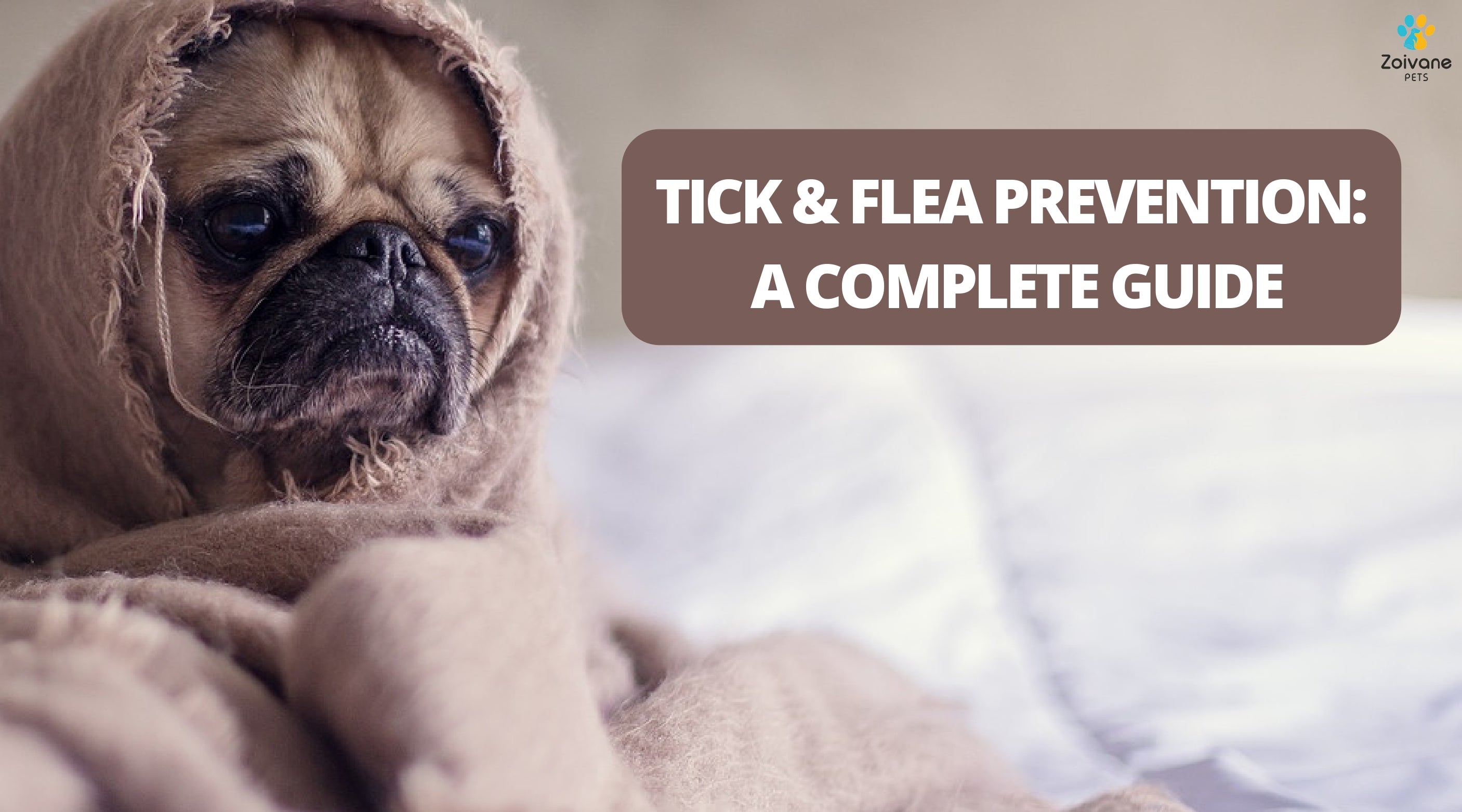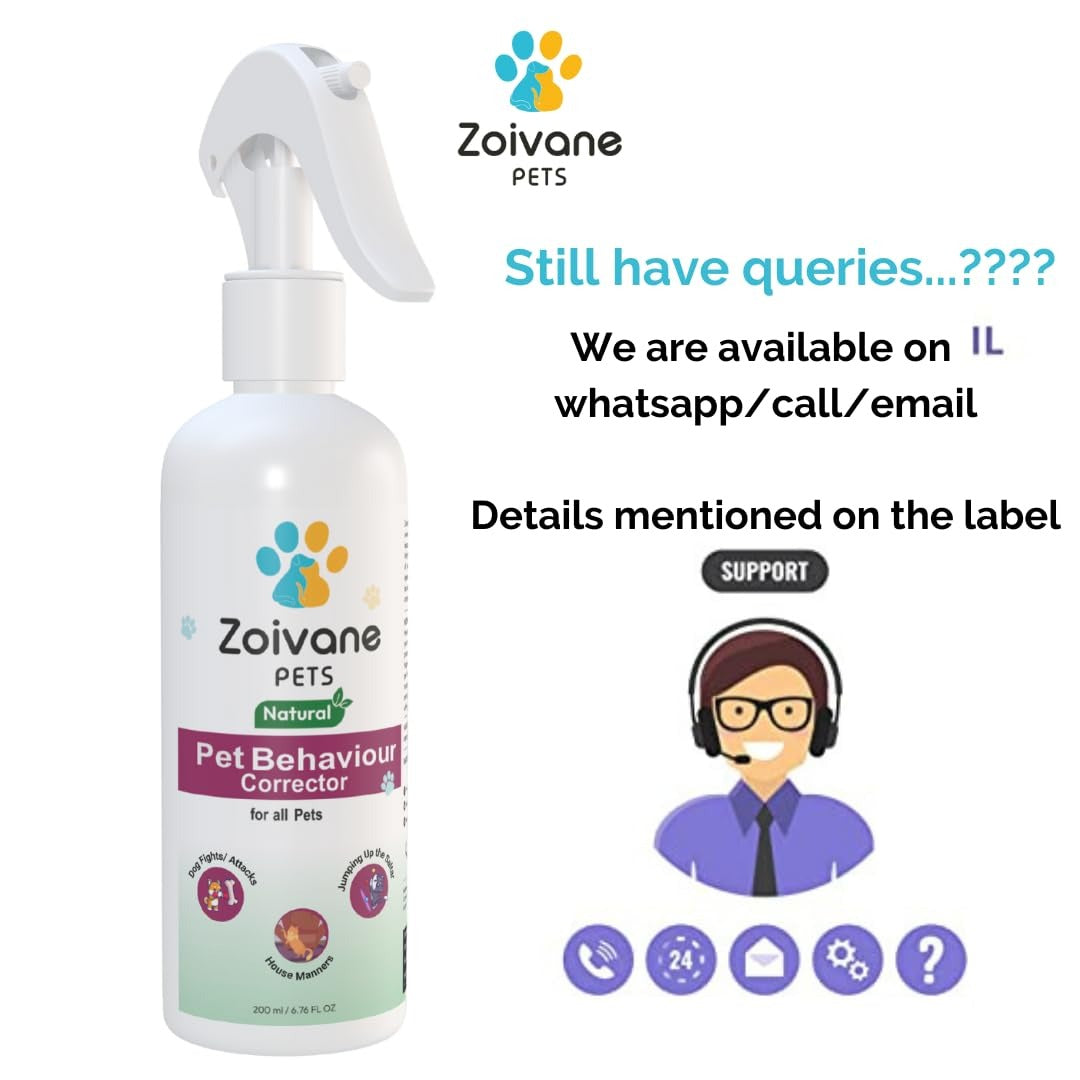
Tick & Flea Prevention: A complete guide
While March to August can be broadly considered as “Tick & Flea season”, your pets are at risk of picking them whole year long. Dogs & cats are at equal risk of catching these parasites but since dogs spend a larger amount of time outdoors & have a bigger coat, they’re at a higher risk. While Ticks & Fleas are found most in areas with high grass or lots of trees, any warm & humid atmosphere is enough for them to breed. This blog will cover, in depth, what are Ticks & Fleas, how to identify them on your pet & remedies to eradicate them.
Firstly, let’s check some hotspots on your pet’s body where Ticks & Fleas are most likely to be found.

About: Fleas
Fleas are wingless Parasitic insects that feed on blood and can live up to 12 months. They can’t fly but can jump from one host to another. Fleas thrive in warm & humid climates. Fleas can suck upto 15 times blood than their body weight which, in adult pets can cause anaemia & significant blood loss over time. However, this is especially dangerous for puppies & kittens as inadequate number of Red Blood Cells can be life-threatening. Check out some signs of Fleas on your pets:-

About: Ticks
Ticks are a different kind of Parasitic insects, like spiders & mites, they’re Arachnids. Ticks bury their heads into their host’s skin and it’s only after they’ve sucked an adequate amount of blood do they swell up and are visible to the naked eye. Check out some signs of Ticks on your pets:-

Now that we know how to identify Ticks & Fleas in your pets, what now? What do you do? What kind of Pet products do you use? What steps do you take to ensure a quick eradication of Ticks & Fleas from your pet’s body? Any contact with infected blood or area can potentially worsen the infection to your pet or even to you. Prompt removal is necessary, but it is essential to stay calm, composed and not rush.
Here’s a step-by-step guide:-
1) PREPARE
- Put on gloves so you don’t have direct contact with the insect or the infected area.
- Keep a container with a lid handy to dispose the Tick / Flea. Throwing them in the trash or flushing them down the toilet is not adequate. This is especially useful for veterinary testing.
- If possible, take help from another family member to soothe, relax and distract your pet from this stressful process.
2) COMB
- Give your pet a thorough comb-examination. Brush them well with a fine-tooth comb or a flea comb.
- Pick out the parasites and their hotspots
- This gives you a good idea about how bad the infestation is.
3) REMOVE
- Use a pair of Tweezers & grasp the tick / flea as close to your pet’s skin as possible.
- Gently hold & pull straight upwards with even pressure and steady movement.
- Place the Tick / Flea in your container.
- DO NOT twist, jerk, squeeze hard or crush the body of the Tick / Flea. This may leave their parts embedded in your pet’s skin or worse this can cause the parasite to regurgitate infective fluids.
4) DISINFECT / MONITOR
- Disinfect the infected area.
- Wash your hands with soap, even if you were wearing gloves.
- Sterilize your tweezers.
- Monitor the infected areas over the next few days more any signs of reinfection or redness or inflammation.
- If infection reoccurs, consult your vet.
5) PREVENTION
- There are many products available in the market but before using them consistently, don’t feel shy about consulting your vet.
- Zoivane Pets has a complete collection to fight against Ticks & Fleas. This includes the Tick & Flea Powder, Tick & Flea Shampoo and a Tick & Flea Spray.
For a complete range of Petcare Products, visit us at https://www.zoivanepets.com/
You can connect with Zoivane Pets on our Website, Instagram, Linkedin, Facebook & YouTube. For suggestions and writeups mail us at wecare.zoivane@gmail.com or Whatsapp us on +91-9727054006
















Leave a comment
This site is protected by hCaptcha and the hCaptcha Privacy Policy and Terms of Service apply.